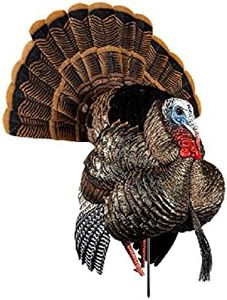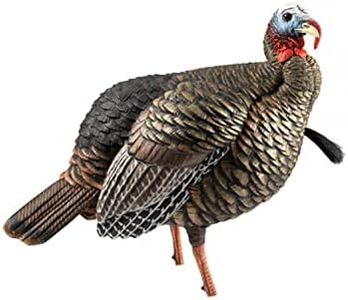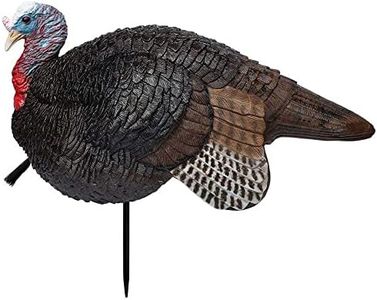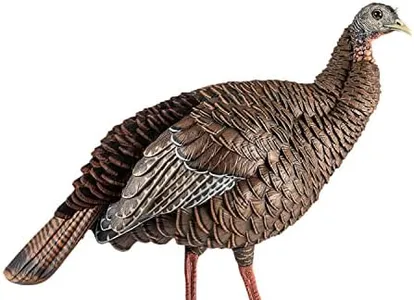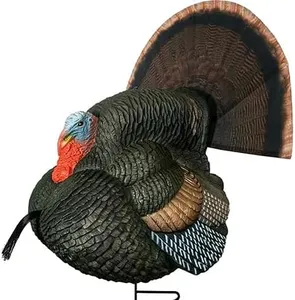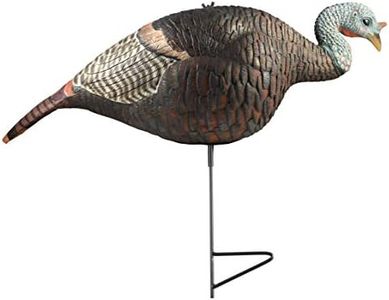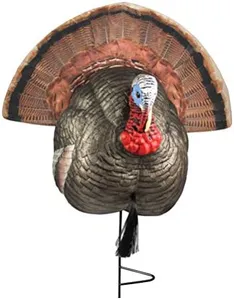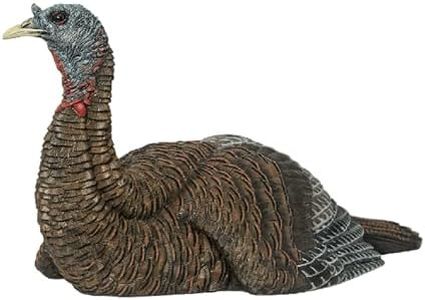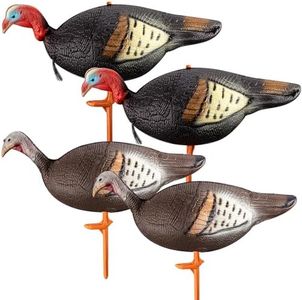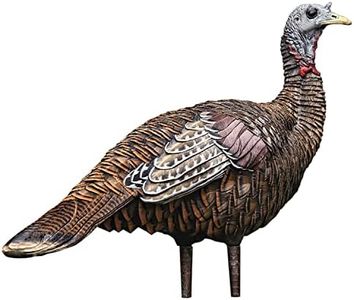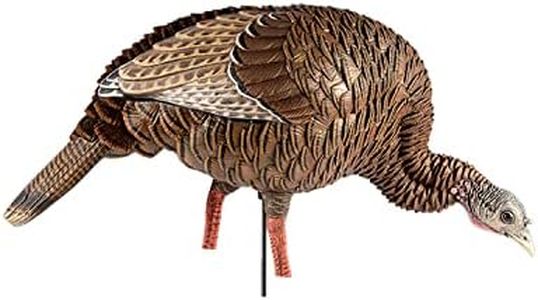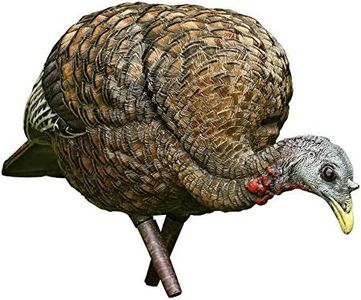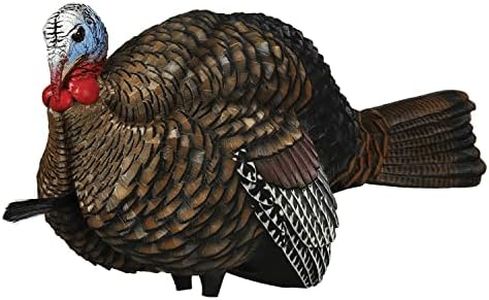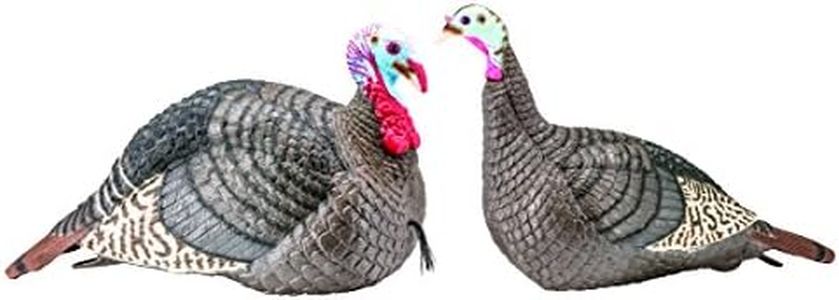We Use CookiesWe use cookies to enhance the security, performance,
functionality and for analytical and promotional activities. By continuing to browse this site you
are agreeing to our privacy policy
10 Best Turkey Decoys
From leading brands and best sellers available on the web.Buying Guide for the Best Turkey Decoys
Choosing the right turkey decoy can make a huge difference in the success of your turkey hunting experience. Decoys are used to attract turkeys by convincing them that other birds are safe or interesting in the area. With so many types and features, understanding what's important in a decoy will help you make a choice that works well for your hunting style and location.Decoy TypeThere are several types of turkey decoys, like hen, jake, and tom decoys. Hen decoys give an impression of a relaxed or nesting female, jake decoys represent a young male, and tom decoys mimic a mature male turkey. Picking the right type depends on the hunting scenario. For example, a jake decoy may draw out dominant toms looking to challenge a rival, while a hen decoy can attract both toms and jakes looking for a mate. Consider your local turkey population and typical behavior when deciding which type to use.
RealismRealism refers to how lifelike the decoy appears in terms of shape, color, feather detail, and posture. Highly realistic decoys may fool wary birds, especially in heavily hunted areas, while simpler models may be sufficient in less pressured areas. Some decoys prioritize bright, vivid colors and fine feather details for close-up encounters, while others are simpler and meant to be seen from a distance. Choose based on how wary the turkeys are in your area and how close you expect to call them.
Material and DurabilityTurkey decoys can be made from various materials like foam, hard plastics, or even fabric with inflatable designs. Light foams are easy to carry but can be less durable, while hard plastics hold up better but may be heavier. Inflatable options are extremely portable but can puncture. If you hike long distances, prioritize lightweight and packable designs, but for repeated use in rough conditions, sturdier materials make more sense.
Ease of Setup and PortabilityThis refers to how quickly and conveniently a decoy can be set up, taken down, and transported. Some decoys have folding or collapsible designs, while others are rigid and require more space. If you move around a lot during a hunt or do a lot of run-and-gun hunting, faster setup and more portable decoys are advantageous. Stationary hunters might prefer larger, more realistic decoys that take longer to deploy.
Movement OptionsSome decoys are static, while others incorporate movement through stakes, spinning parts, or wind-driven motion. Movement can make your decoy more convincing since real turkeys rarely stay perfectly still. Stationary decoys are simpler, but motion decoys can help seal the deal, especially when you need to grab a distant turkey's attention. If hunting in open fields, consider decoys with realistic movement. In dense woods, simpler stationary decoys can still be effective.
